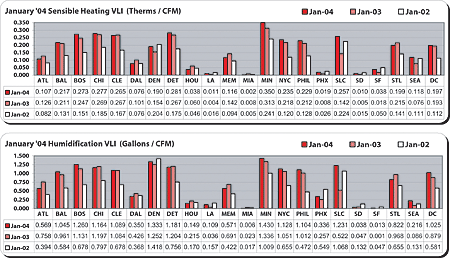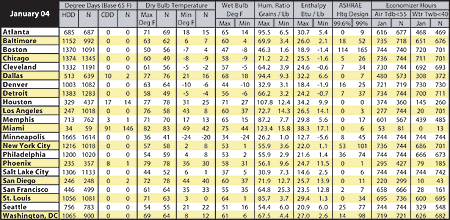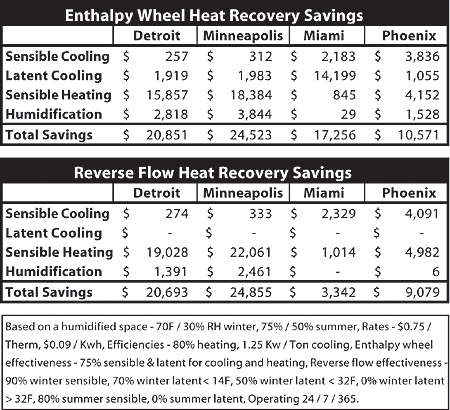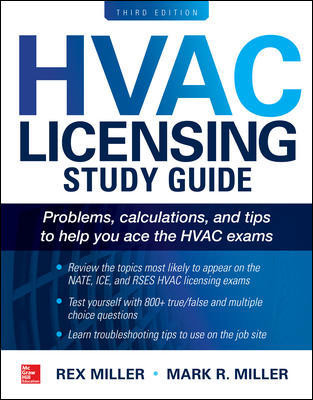

Reverse flow heat recovery - competition for the enthalpy wheel?
It's no secret that engineers are inclined to be conservative in nature (I've been accused as well). If you ask an engineer, "Why did you do it that way?" you might get this for an answer: "Because that's the way my daddy did it ... and that's the way his daddy did it." That's why we keep finding new smoke exhaust fans installed in conference rooms, even though smoking inside buildings is a crime. Given this mindset, you can imagine how difficult it is for a manufacturer with a new idea or different approach to break into the market. It's like trying to change the direction of an ocean liner with a canoe paddle.Although it may be counter to our natural instincts, part of our job is to make a conscious effort to keep an open mind to new ideas that potentially could benefit a particular client. We have spent a lot of time over the past couple of years in this column analyzing the performance of the many different types of air-to-air heat recovery systems, including the runaround "rat race" coil, heat pipe, flat plate, and the desiccant rotary wheel. In this column, we'll take a look at a new (at least new to me) type of air-to-air heat recovery system. This is not a product endorsement, just an objective, general overview, and system comparison.
The manufacturer (bkm Engineered Interiors) refers to this system as a "reverse flow" system. Basically, the reverse flow system consists of two heat exchanger cassette banks and a two-position damper. The exhaust air and outside airstreams flow through the two individual cassettes. While the exhaust air is directed over one cassette, the other cassette is transferring energy to or from the incoming fresh air with the energy stored from the previous cycle. After a period of time (typically about a 70-sec cycle), the damper alternates and reverses the flow through the cassettes. Illustrations and schematics can be seen on the website at the end of this column.

Performance
Depending on the location, the performance can be comparable to desiccant systems. The manufacturer claims sensible heat transfer effectiveness of over 90% in the heating mode and 80% for summer operation. There is also some latent energy transfer during the winter. Moisture in the exhaust air is removed through condensation on the colder plates and absorbed back into the incoming fresh air on the next cycle. The manufacturer claims 70% latent effectiveness during the winter below 14°F and 50% below 32°. There can be additional latent transfer above 32° if the outside air temperature is less than the exhaust dewpoint temperature.
I ran an hourly data model for a 10,000-cfm system with the above values and compared the results to a typical enthalpy wheel operating at 75% as shown in Figure 3 (note the assumptions at the bottom). The comparison shows that the reverse flow system can provide comparable or even superior savings in colder climates. It can also be competitive in dry climates (Phoenix). However, the savings tail off significantly in humid climates (Miami) due to the lack of latent cooling recovery. Note that the comparison assumed that any fan operating costs associated with heat exchanger pressure drops were a wash. Also note that the enthalpy wheel savings in Figure 3 does not account for frost protection preheat losses, and would be less.
O&M
The manufacturer selected aluminum for the cassette material, primarily for durability and ease of maintenance. Consideration was given to desiccant materials but they opted for the operational and maintenance benefits of aluminum over any additional latent gains offered by a desiccant system. Additionally, the only mechanical device in the system is the damper actuator. There are no motors, belts, frost controls or even filters. The system is simple, reliable, and "sustainable." The manufacturer recommends washing the cassettes every five years.Summary
The reverse flow system may require a little more space than other systems due to the required ductwork. Also, there is a possibility that some of the exhaust air can spill into the fresh airstream when the damper is changing position (for approximately one second). The manufacturer claims a 3% cross-leakage rate, which includes this damper transition. Other than that, the system looks pretty good on paper. At some point, I hope to see an actual installation to kick the tires a little more. The manufacturer did provide some field data to confirm the sensible efficiency, but I haven't seen the latent data yet. If the system performs as well as claimed, I would definitely consider it, especially for projects located in colder climates. This system would also be a good choice if reliability and maintenance costs are of primary concern. For additional information, refer towww.reverse-flow.com.ESEDITOR'S NOTE:Some of the images associated with this article may not be available via the Internet. To view them refer to the print version of this issue.
NOTES: This report is generated from raw data furnished by the National Weather Service (NWS). Normal max/min and degree day values are from the historical record provided by the National Climatic Data Center (NCDC). ASHRAE design hours are number of hours that meet or exceed the 1997 ASHRAE Fundamentals design conditions. The cooling ventilation load index (VLI) is the total (sensible + latent) energy in ton-hrs/cfm required to maintain 55°F discharge air temperature. Likewise, the heating VLI is the sensible heat energy in Therms/cfm required to maintain 55°. The humidification VLI is the amount of water in gal/cfm required to maintain 30% rh at 70° space temperature.


